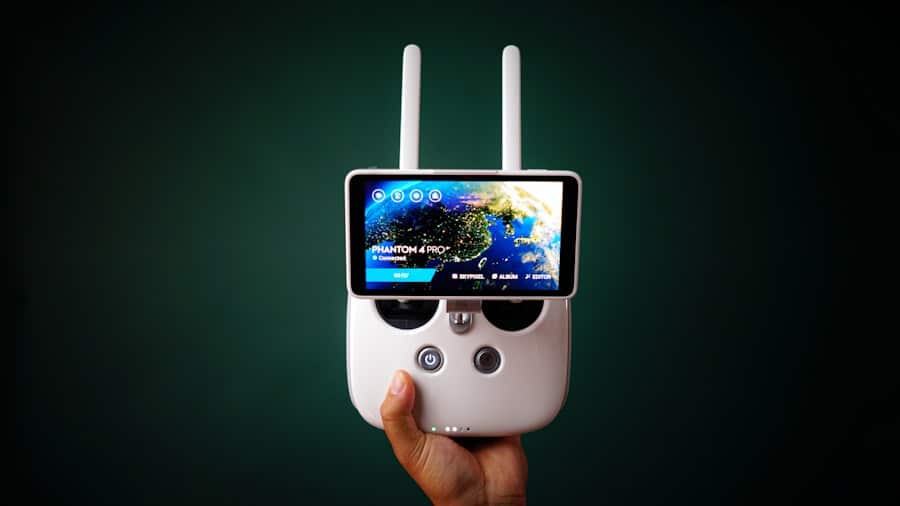Edge AI represents a transformative shift in the way artificial intelligence is deployed and utilized, moving computation and data processing closer to the source of data generation. This paradigm allows for real-time decision-making and analysis, significantly reducing latency and bandwidth usage compared to traditional cloud-based AI systems. By integrating AI capabilities directly into devices at the “edge” of the network—such as IoT sensors, cameras, and mobile devices—organizations can achieve faster responses and enhanced operational efficiency.
The convergence of edge computing and artificial intelligence is particularly significant in environments where immediate data processing is critical, such as autonomous vehicles, smart cities, and industrial automation. Wireless technology plays a pivotal role in the effectiveness of Edge AI applications. The ability to transmit data wirelessly allows for greater flexibility and scalability in deploying AI solutions across various environments.
As devices become increasingly interconnected, the demand for robust wireless communication systems that can support the high data throughput required by AI algorithms becomes paramount. This synergy between edge computing and wireless technology not only enhances the performance of AI applications but also opens up new avenues for innovation across multiple sectors, including healthcare, manufacturing, and transportation.
Key Takeaways
- Wireless technology enhances Edge AI by enabling real-time data processing and reducing latency.
- 5G plays a crucial role in boosting Edge AI performance through high-speed, low-latency connectivity.
- Overcoming wireless connectivity challenges is essential for reliable and efficient Edge AI deployment.
- Security is a critical concern when integrating wireless tech with Edge AI, requiring robust protection measures.
- Future trends indicate continued advancements in wireless tech will further expand Edge AI capabilities and applications.
The Benefits of Wireless Technology for Edge AI Applications
Wireless technology offers numerous advantages that are particularly beneficial for Edge AI applications. One of the most significant benefits is the reduction in latency. In scenarios where real-time data processing is essential, such as in autonomous driving or remote surgery, the ability to process data locally at the edge minimizes delays that could arise from sending data to a centralized cloud server.
This immediacy enables faster decision-making, which can be critical in time-sensitive situations. Moreover, wireless technology facilitates greater mobility and flexibility in deploying Edge AI solutions. For instance, in smart agriculture, sensors can be placed throughout a field to monitor soil conditions, crop health, and weather patterns without the constraints of wired connections.
This mobility allows farmers to gather data from various locations seamlessly, leading to more informed decisions about irrigation, fertilization, and pest control. Additionally, wireless networks can be easily expanded or reconfigured to accommodate new devices or changing operational needs, making them ideal for dynamic environments.
The Role of 5G in Empowering Edge AI

The advent of 5G technology marks a significant milestone in enhancing the capabilities of Edge AI. With its ultra-low latency, high bandwidth, and massive device connectivity, 5G is uniquely positioned to support the demands of advanced AI applications. For example, 5G networks can handle thousands of devices per square kilometer, which is essential for densely populated areas or industrial settings where numerous IoT devices operate simultaneously.
This capability ensures that data from various sources can be collected and processed in real-time without bottlenecks. Furthermore, 5G’s enhanced reliability and speed enable more complex AI algorithms to be executed at the edge. In sectors like healthcare, where remote monitoring and telemedicine are becoming increasingly prevalent, 5G allows for high-definition video consultations and real-time patient monitoring without interruptions.
The ability to transmit large volumes of data quickly and reliably means that healthcare providers can make timely decisions based on accurate information, ultimately improving patient outcomes. As 5G continues to roll out globally, its integration with Edge AI will likely lead to innovative applications that were previously unattainable.
Overcoming Challenges in Wireless Connectivity for Edge AI
Despite the numerous advantages that wireless technology brings to Edge AI applications, several challenges must be addressed to ensure seamless connectivity and performance. One significant challenge is signal interference and coverage limitations. In urban environments with dense infrastructure or rural areas with sparse connectivity, maintaining a stable wireless connection can be problematic.
This inconsistency can hinder the performance of Edge AI applications that rely on continuous data streams for processing. Another challenge lies in the energy consumption of wireless devices. Many Edge AI applications are deployed in remote or hard-to-reach locations where power supply may be limited.
Ensuring that devices can operate efficiently without draining their batteries is crucial for long-term deployment. Solutions such as energy-efficient communication protocols and low-power hardware designs are being explored to mitigate these issues. Additionally, advancements in energy harvesting technologies could provide sustainable power sources for these devices, further enhancing their viability in various applications.
Case Studies: Successful Implementation of Wireless Tech in Edge AI
Several case studies illustrate the successful implementation of wireless technology in Edge AI applications across different industries. In the realm of smart cities, a notable example is Barcelona’s deployment of smart streetlights equipped with sensors that monitor traffic flow and environmental conditions. These streetlights utilize wireless communication to transmit data to a central system where AI algorithms analyze the information in real-time.
This setup not only optimizes energy consumption by adjusting lighting based on pedestrian activity but also enhances urban planning by providing insights into traffic patterns. In agriculture, John Deere has integrated Edge AI with wireless technology to revolutionize farming practices. Their precision agriculture solutions utilize drones equipped with sensors that collect data on crop health and soil conditions.
The drones communicate wirelessly with edge devices that process this data locally, allowing farmers to make immediate decisions regarding irrigation and fertilization. This approach not only increases crop yields but also reduces resource waste, demonstrating how wireless technology can enhance efficiency in agricultural operations.
Security Considerations for Wireless-Enabled Edge AI

As with any technology that relies on wireless communication, security is a paramount concern for Edge AI applications. The proliferation of connected devices increases the attack surface for potential cyber threats. Ensuring that data transmitted over wireless networks is secure from interception or tampering is critical for maintaining the integrity of Edge AI systems.
Implementing robust encryption protocols and secure authentication methods is essential to protect sensitive information. Moreover, the decentralized nature of Edge AI poses unique security challenges. Unlike traditional cloud-based systems where data is centralized, edge devices often operate independently and may not receive regular security updates.
This lack of oversight can leave vulnerabilities unaddressed, making it imperative for organizations to adopt proactive security measures. Regular audits of device security configurations, along with implementing intrusion detection systems at the edge, can help mitigate risks associated with wireless-enabled Edge AI applications.
Future Trends in Wireless Technology for Edge AI
Looking ahead, several trends are poised to shape the future of wireless technology in Edge AI applications. One significant trend is the continued evolution of network infrastructure towards more advanced standards beyond 5G, such as 6G. These next-generation networks promise even lower latency and higher capacity, enabling more sophisticated AI algorithms to operate at the edge seamlessly.
As these technologies develop, they will likely unlock new possibilities for real-time analytics and decision-making across various sectors. Another trend is the increasing integration of artificial intelligence into wireless network management itself. By leveraging machine learning algorithms, network operators can optimize resource allocation dynamically based on real-time demand and usage patterns.
The Potential of Wireless Tech in Advancing Edge AI Applications
The intersection of wireless technology and Edge AI presents a wealth of opportunities for innovation across multiple industries. As organizations continue to explore the potential of these technologies, they will likely uncover new applications that enhance efficiency, improve decision-making processes, and drive economic growth. The ongoing advancements in wireless communication standards will further empower Edge AI solutions, enabling them to operate more effectively in diverse environments.
As we move forward into an increasingly connected world, the collaboration between wireless technology and Edge AI will be crucial in addressing complex challenges across sectors such as healthcare, transportation, agriculture, and smart cities. By harnessing the power of these technologies together, we can create smarter systems that not only respond to immediate needs but also anticipate future demands—ultimately paving the way for a more efficient and intelligent society.
In exploring the transformative impact of wireless technology on edge AI applications, it’s interesting to consider how these advancements can also enhance personal productivity tools. For instance, the article on top scheduling software for 2023 highlights various tools that leverage cutting-edge technology to streamline daily tasks, showcasing the broader implications of tech innovations in our everyday lives.
FAQs
What is edge AI?
Edge AI refers to the deployment of artificial intelligence algorithms directly on devices at the edge of the network, such as smartphones, sensors, or IoT devices, rather than relying on centralized cloud servers. This allows for faster data processing and reduced latency.
How does wireless technology support edge AI applications?
Wireless technology enables seamless and real-time communication between edge devices and other network components. It provides the necessary connectivity for data transfer, remote management, and coordination, which are essential for the efficient functioning of edge AI applications.
What are the benefits of combining wireless tech with edge AI?
Combining wireless technology with edge AI offers benefits such as reduced latency, improved data privacy, lower bandwidth usage, enhanced scalability, and the ability to operate in remote or mobile environments without relying on constant cloud connectivity.
Which wireless technologies are commonly used in edge AI?
Common wireless technologies used in edge AI include Wi-Fi, 5G, Bluetooth, Zigbee, and LoRaWAN. The choice depends on factors like range, data rate, power consumption, and application requirements.
What industries benefit from wireless-enabled edge AI?
Industries such as manufacturing, healthcare, automotive, agriculture, and smart cities benefit from wireless-enabled edge AI by enabling real-time analytics, predictive maintenance, autonomous operations, and improved decision-making at the edge.
Are there security concerns with wireless edge AI applications?
Yes, wireless edge AI applications can face security challenges such as data interception, unauthorized access, and device tampering. Implementing robust encryption, authentication, and secure communication protocols is essential to mitigate these risks.
How does wireless technology impact the scalability of edge AI?
Wireless technology facilitates easy deployment and expansion of edge AI networks by enabling devices to connect without extensive wiring. This flexibility supports scalable and dynamic edge AI ecosystems that can grow with organizational needs.
Can edge AI operate without wireless connectivity?
While edge AI can perform local data processing without wireless connectivity, wireless communication is often necessary for data sharing, updates, and coordination among devices, especially in distributed or collaborative applications.

